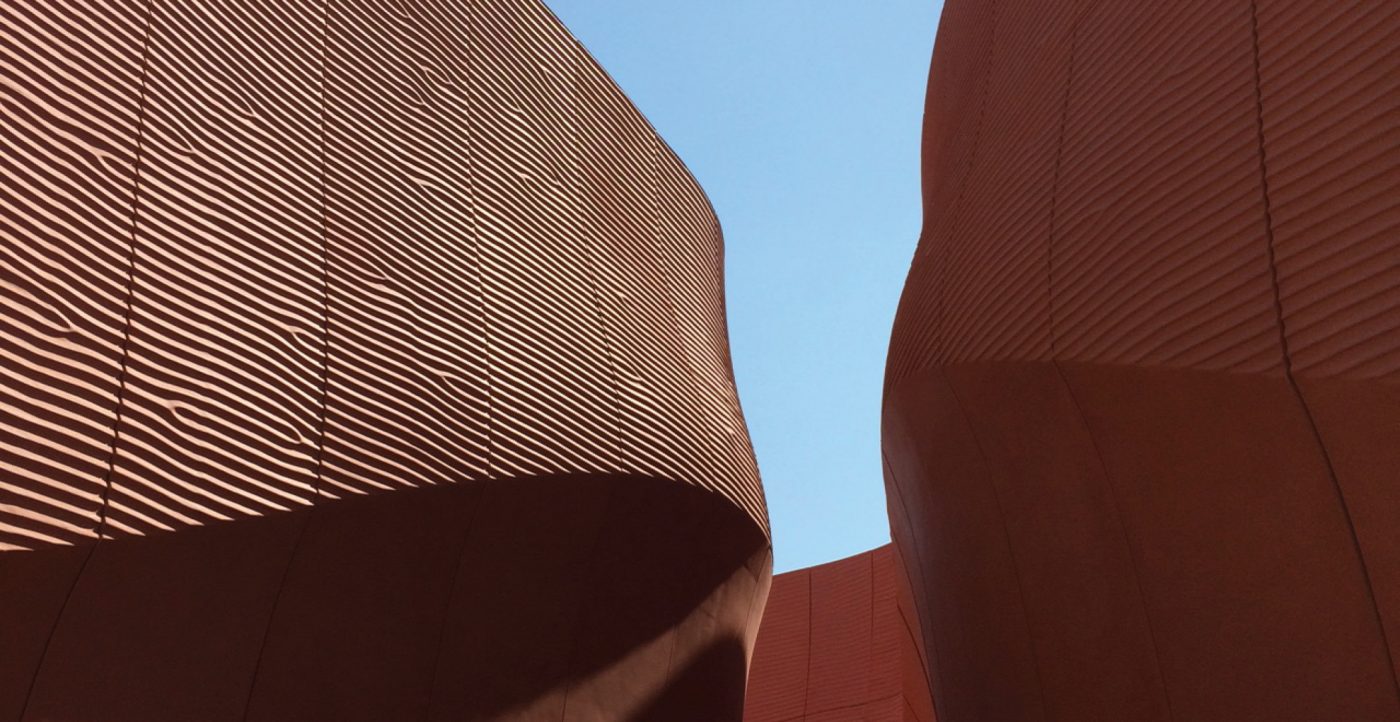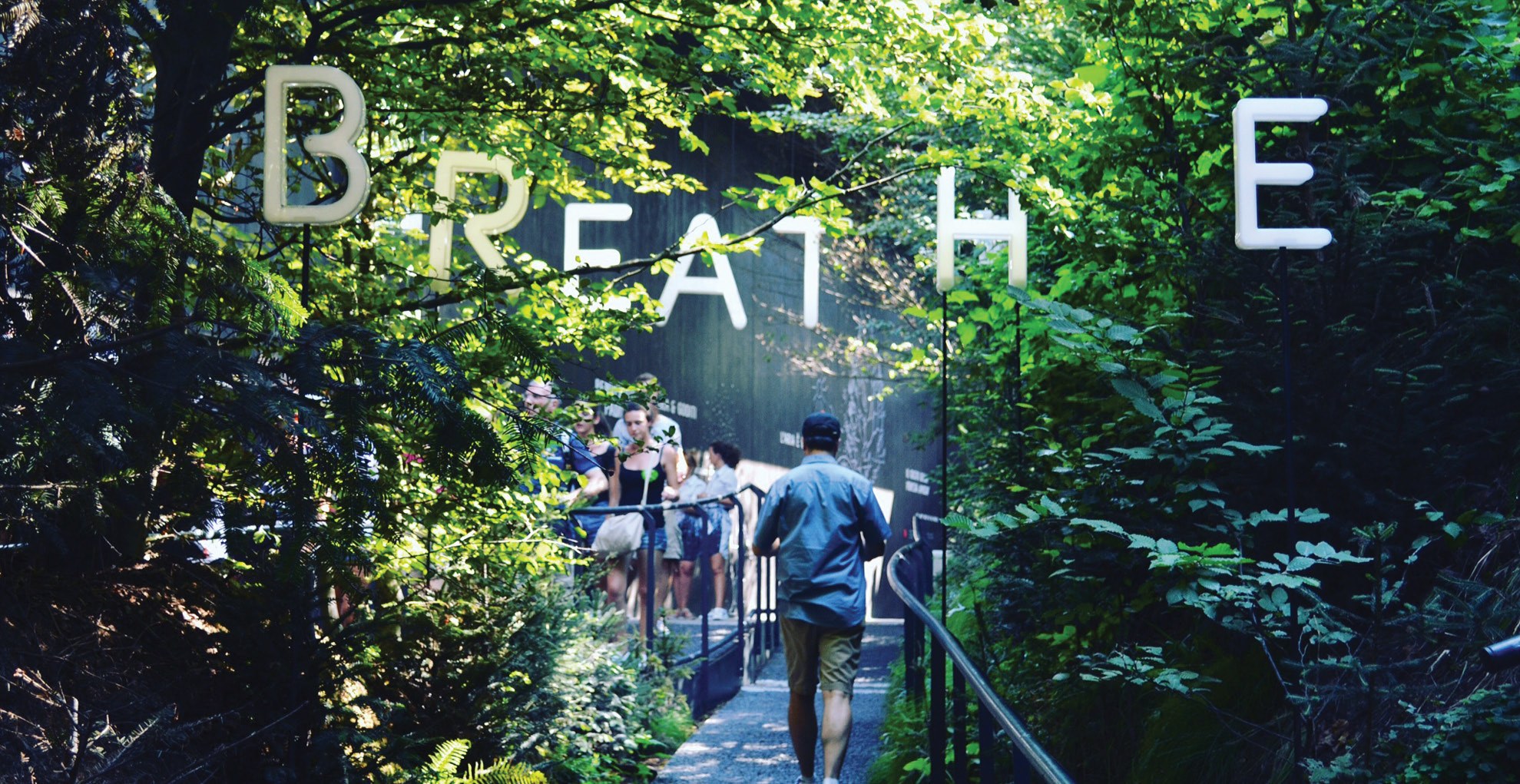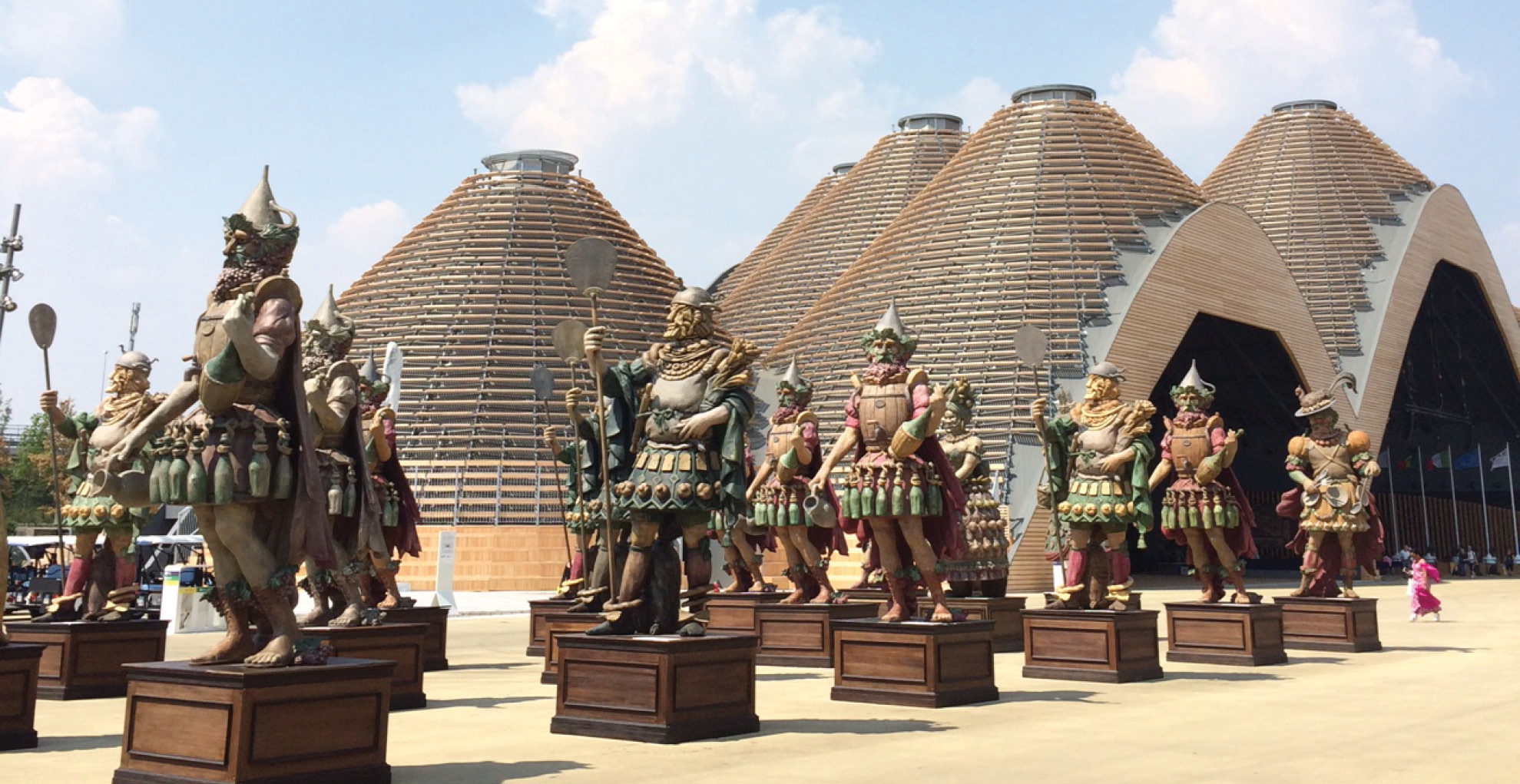Milan—The City that Knows Wow

Milan Design Week: April, 2016 – Milan has always attracted young Italians and others from all over the world, drawn by the allure of a vibrant and cosmopolitan city that has long been a center for design, fashion and media. Every spring in the middle of April, Milano brings it with Milan Design week, eagerly anticipated by both the Milanese and by design junkies from all over the world. The Salone del Mobile, a huge furniture fair with over 2400 exhibitors and hundreds of related design events (and 400,000 visitors!), saturates the city for a week with the latest designs for chairs and lamps and desks and kitchens and—you get the idea. Design Week–which really creeps out to a couple of weeks–also includes “The Salone” (I Saloni), and is a mega-event of exhibits and design pavilions at the fairgrounds, but also spreads installations throughout the city neighborhoods, parks, streets and galleries.
The city of Milan is like one big living design museum, and the center of that would be the Triennale Design Museum, which opened the 21st Triennale International Design Exposition in early April. After a 20-year hiatus, the Triennale is back with a focus on design and architecture from all over the world, and will last for five months. Milan is also experiencing a building boom, with many new designer high-rise towers, both commercial and residential, which bear witness to Milan’s economic strength in finance, manufacturing and design. Rome bickers and Milan builds.
Last year, the center of design in Milan was the Expo Milano, a world’s fair that was headed up by Bepe Sala, a former city manager of Milan. The temporary fair lasted six months and exceeded all expectations by hosting over 20 million visitors. Needless to say, Bepe is running for mayor of Milan in June and is a good bet to win.
A World’s Fair: Expo Milano 2015 – This past summer, I was fortunate enough to visit the Expo Milano 2015 as part of a family vacation to northern Italy. As the old saying goes, for every church in Rome, there is a bank in Milan. If any Italian city could pull off a very large and very expensive undertaking like a World’s Fair during what has been a slow recovery from the deep economic funk that has gripped Italy and most of Europe since 2008, Milan would seem to be the logical choice.
Did I mention the Expo was big? – The Expo was located in an industrial neighborhood outside of the historic city center along a rail line with a new station built to receive the throngs of visitors, including daily international trains direct from Germany, France and Switzerland. Situated on 490 acres, the fair accommodated pavilions for 145 countries, 17 International & Civil Organizations and 21 businesses & major sponsors. The layout organized most of the visiting pavilions along the 1.5 kilometer long Decumano (just shy of a mile) and the Italian Pavilions were laid out along the 350 meter Cardo (about a quarter of a mile long). Walking under the roman-scaled shaded concourse offered some protection from the summer sun, but like Disneyland, the Expo planners also included a perimeter transit system (shuttle buses) as an alternative to the death march with gelato.
Food and Italy is always a good idea – Expo Milano chose the theme “Feeding the Planet, Energy for Life.” Italy in July 2015 was very hot (upper 90’s hot), which added all kinds of drama to the talk about climate change and the precariousness of world food supplies. While many of the pavilions and exhibits addressed issues of food supply, water, diet and the emerging global scenarios of ocean-level rise and sustainable food production, all of those doom and gloom issues still had to compete with the carnival atmosphere of food, beer gardens and hourly parades of dancing fruit and vegetables.
Most of the national pavilions included a restaurant or café and offered visitors a chance to try a dish from an exotic land. Perhaps not such a big deal for someone from San Francisco (Honduran or Burmese takeout tonight?), but it was a very big deal for Italians who eat mostly, well….Italian food. The sheer scale of the fair and the carnival midway atmosphere made it hard to focus on water use and sustainable ranching practices, especially when the nice folks from Uruguay served me the BEST STEAK EVER for lunch.
There were also “pods” that highlighted food commodities like coffee and chocolate, which sounded great, but there were not a lot of takers for either of my two favorite Foods From The Gods when it was 98-degrees outside. Eataly (the Turin-based food emporium) presented pretty good food selections from all the different regions of Italy, but of course the American Pavilion had food trucks with burgers and fish tacos (sigh), and Coca Cola had a massive pavilion where people stood in line for an hour to get a free coke (bad flashbacks to the Atlanta Olympic Games in ’96).
And of course there was also a McDonald’s, which needless to say, raised the eyebrows of the Italy-based Slow Food Movement, and presented one of the weirder juxtapositions of the fair by being located next door to a large middle-eastern Arab country pavilion (pork breakfast patties, anyone?) The placement of the McDonald’s on the main concourse, while the biodiversity pavilions and demonstration gardens where shuffled off to side streets and cul-de-sacs was somewhat symbolic of the uphill fight that the slow food and sustainable farming movements are facing.
Brand-Named Design for Brand-Named Countries – The Design spectrum of the pavilions ranged from tradeshow boxes at one end to high-concept statements designed by the likes of Norman Foster, Herzog & de Meuron, Daniel Libeskind, and others. Most pavilions were more interesting on the outside, and many did not have enough money left over for a decent exhibit design on the inside, which were all over the map. Literally. Some of them had maps with thumb tacks.
Design matters when you are trying to tell a story, and a World’s Fair exhibit needs to go way beyond the Middle-School Science Fair level of design. I don’t care how big your natural gas reserves are–the wall map with thumb tacks and yarn does not cut it.
In the July heat of the Italian summer, anything with shade, water or cool drinks trumped architectural spectacle. Because of the sheer size of the Expo, there was no way to see even a fraction of the exhibits and pavilions in two days, but crowd favorites were promoted by word of mouth and social media, which was also very helpful to see how long the lines were before walking a mile only to find out it was a 90-minute wait.
My favorites included the Japan Pavilion, which had beautiful and fully immersive video environments and an over-the-top zany game-show like extravaganza with singing and clapping and kimono-clad hosts darting around on electric scooters.The Czech pavilion may have had some interesting things to see inside or on their roof deck, but I never saw them because they had a wading pool! The Czechs were the only ones that truly planned for a hot summer on a warming planet. Their pool was packed with kids and adults, and it included lounges and a poolside bar selling Czech beer, of course.
Austria created a large courtyard-type building with a forest in the middle that bathed visitors in oxygen, mist and shade. The message? Breathe, relax and remember how important these trees are. A true urban oasis in a big hot city. My choice for best of show.
Are World’s Fairs still relevant today? – If you invite the world to a big party, how do you plan for it without breaking the bank, and what do you do with it when the party is over? Governments are not spending much money on expositions and good design much these days, so expect large corporations to foot the majority of the bill to pay for the World Fairs, the Olympics and the restoration of world monuments, and maybe someday even national parks and marine preserves. And yes, they will want to stick their name on it somewhere. Get used to it.
Was the fair sustainable? – Sort of. Most of the structures were designed to be disassembled, and the deconstruction started almost immediately after the fair closed. Building materials and even trees were trucked off for use on other projects and locations. The overall fair site will most likely be used by the local university for a new campus and research park, but that remains to be seen.
I really enjoyed feasting on the design of the fair, but I mostly learned about food and the challenges of feeding our planet—all things I could have read or viewed on my phone. The best experience of the fair, in my opinion, was the opportunity to meet in person both visitors and workers from all over the world (and all over Italy), and the chance to chat with them and hear about their lives, their big plans and their favorite foods. I learned that many young and highly educated Italians, Poles, and Argentines (to name a few), frustrated by the lack of opportunities for nurses, veterinarians, coders and architects, are heading in droves to the States, to Canada, to Australia and to opportunities outside of their native lands where their population continues to age and the birthrate drops. Those stories mean a lot more when the person telling the story is looking at you eye to eye, so yes, I think that a World’s Fair still has a role to serve in the 21st century.
While Expo Milano came with the obligatory stories of corruption and rigged bids that seem to be a national sport in Italy, I would say that overall it was a big success considering the odds that were stacked against it. I think the Italians did a pretty good job of showing the world that if the planet is going to hell in a hand-basket, let’s do something about it now AND let’s eat well and make sure we can always share it with our family, friends, and neighbors.



